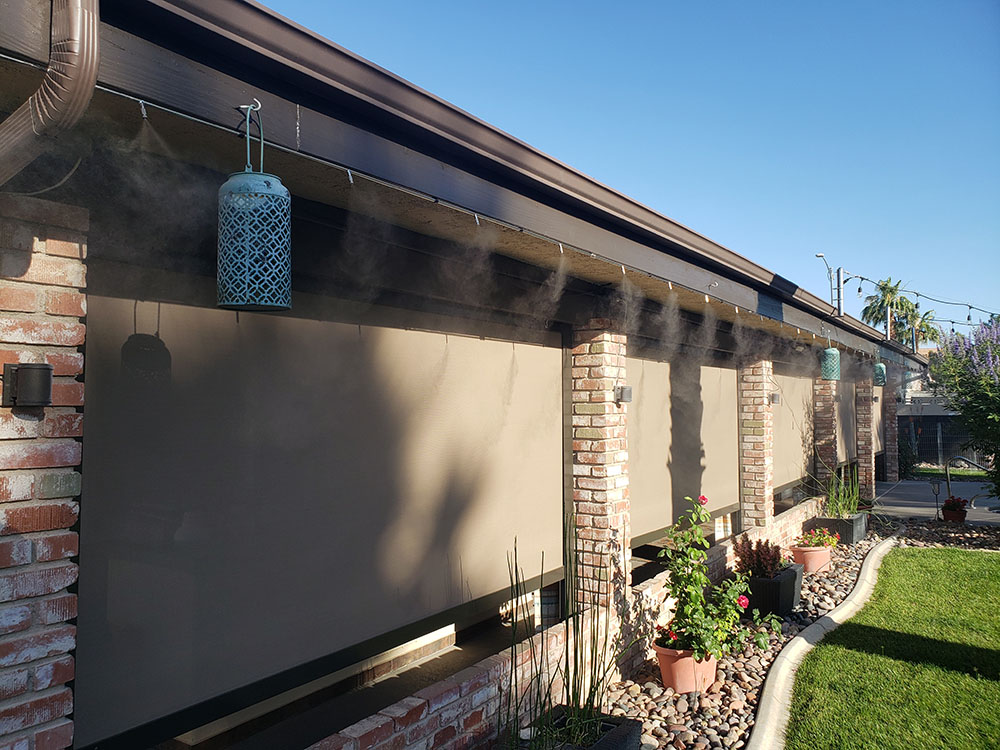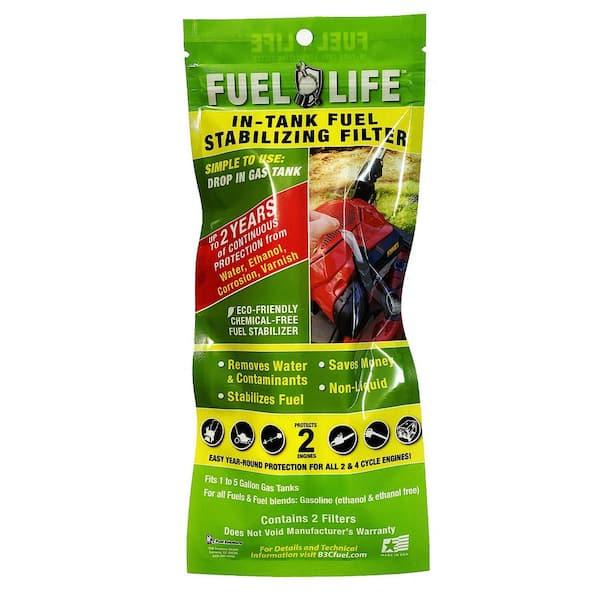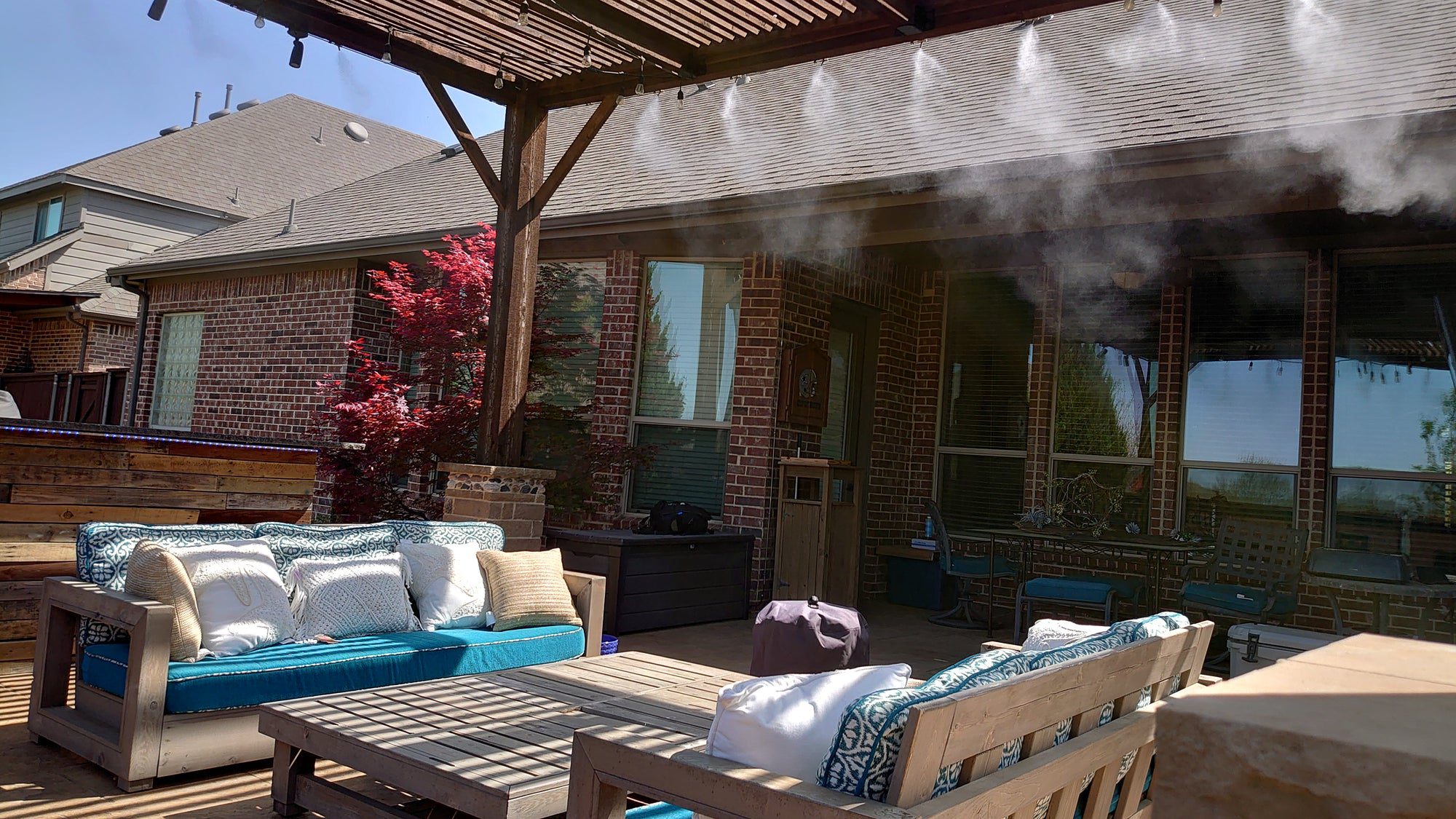The pressure in a misting system should typically be maintained at around 1000-1500 psi. A misting system requires a specific level of pressure to create the fine mist that effectively cools the surrounding air.
This pressure range allows for optimal atomization of the water droplets, ensuring efficient evaporation and maximum cooling potential. Now, let’s delve into more details about the pressure requirements of misting systems. Misting systems are used in various settings, such as outdoor spaces, patios, restaurants, or industrial applications, to provide relief from the scorching heat while utilizing minimal water.
The pressure plays a crucial role in achieving this desired cooling effect. Maintaining a pressure range of 1000-1500 psi allows the water droplets to be finely atomized, creating a mist with the ideal size and distribution. As a result, the mist quickly evaporates, absorbing heat from the air and providing a refreshing coolness. It’s essential to remember that the appropriate pressure may vary depending on the specific misting system, environmental conditions, and desired cooling effect. By optimizing the pressure, you ensure efficient and effective cooling while conserving water.

Credit: www.amazon.com
The Importance Of Optimal Pressure
In a misting system, the pressure of the water plays a crucial role in its overall performance and effectiveness. Achieving the right pressure is essential for ensuring that the misting system operates at its best, providing the desired cooling effect and coverage. This article will explore the importance of optimal pressure in a misting system, why pressure matters, and the impact of incorrect pressure.
Why Pressure Matters
Pressure is the force exerted on the water molecules within the misting system, determining the size and quality of the water droplets that are sprayed. The right pressure is essential for generating a fine mist that can easily evaporate when it comes into contact with the surrounding air.
When the pressure is too low, the water droplets produced are larger and may not disperse evenly, leading to a reduced cooling effect. On the other hand, excessively high pressure can result in ultra-fine mist that evaporates too quickly, before reaching its intended target. Achieving the optimal pressure range allows for the creation of ultra-fine droplets that have sufficient time to cool the surrounding air before evaporating.
Impact Of Incorrect Pressure
If the misting system operates with incorrect pressure, it can have several negative consequences. Firstly, low pressure can cause the water droplets to be larger and heavier, resulting in a reduced coverage area. This means that some areas may not receive adequate cooling, leaving users feeling uncomfortable during hot weather.
High pressure, on the other hand, can lead to excessive water consumption, as the mist evaporates too quickly. This not only wastes water but also reduces the effectiveness of the misting system, as the cooling effect is minimized due to evaporating before reaching its intended target.
Additionally, incorrect pressure in a misting system can impact the system’s lifespan. Constantly operating at low or high pressures places undue stress on the system’s components, potentially leading to premature wear and tear. This can result in frequent breakdowns, costly repairs, or the need for a complete replacement of the system.
In conclusion, achieving the optimal pressure range in a misting system is vital to its overall performance, efficiency, and effectiveness. It ensures the creation of a fine mist that effectively cools the surrounding air and provides the desired coverage. By considering the importance of pressure and maintaining it within the optimal range, users can experience the full benefits of a misting system while maximizing its lifespan.

Credit: www.cool-off.com
Determining The Optimal Pressure
Determining the optimal pressure for a misting system can be a crucial factor in achieving the desired effect. By considering factors such as the environment, desired cooling effect, and the type of misting system, you can find the perfect balance of pressure to create a comfortable and refreshing atmosphere.
Considerations For Different Applications
When determining the optimal pressure for a misting system, it is important to consider the specific application in which the system will be used. Different applications require different levels of pressure to achieve the desired results. Here are some key considerations for determining the optimal pressure for various applications: 1. Outdoor Cooling Systems: For outdoor cooling systems, such as those used in patio areas or outdoor dining spaces, a lower pressure is typically sufficient. Generally, a pressure range of 40-60 psi (pounds per square inch) is suitable for outdoor cooling applications. This allows for a fine mist that can effectively cool the surrounding air without creating excessive wetness. 2. Agricultural Use: In agricultural settings, misting systems are often used to provide moisture and regulate temperature for crops and livestock. The pressure requirements for agricultural misting systems can vary depending on the specific needs of the plants or animals. For example, delicate plants may require a lower pressure of around 30-40 psi, while certain livestock may benefit from a higher pressure of 50-70 psi. 3. Dust Suppression: Misting systems are also commonly used for dust suppression in industrial or construction sites. The pressure needed for dust suppression applications depends on the size and type of dust particles being controlled. In general, higher pressure ranges of 80-100 psi or more are required to effectively suppress larger dust particles and prevent them from becoming airborne.Factors Affecting Pressure Requirements
In addition to considering the specific application, there are several factors that can affect the pressure requirements of a misting system. These factors must be taken into account to ensure that the system operates effectively and efficiently. Here are some of the key factors to consider: 1. Nozzle Size: The size of the nozzles used in the misting system can greatly influence the pressure requirements. Smaller nozzle sizes generally require higher pressures to achieve the desired misting effect, while larger nozzles can operate at lower pressures. 2. Water Quality: The quality of the water being used in the misting system can also impact the pressure requirements. Water with high mineral content or impurities may require higher pressures to ensure proper atomization and prevent clogging of the nozzles. 3. Desired Coverage Area: The size and shape of the area that needs to be covered by the misting system can also affect the pressure requirements. Larger areas or areas with complex layouts may require higher pressures to ensure adequate coverage and distribution of the mist. In conclusion, determining the optimal pressure for a misting system involves considering the specific application and various factors that can affect pressure requirements. By taking these considerations into account, you can ensure that your misting system operates effectively and provides the desired results.Measuring And Adjusting Pressure
A crucial aspect of maintaining an effective misting system is getting the pressure levels just right. When it comes to misting systems, pressure is the key that unlocks the perfect balance between droplet size, reach, and evaporation time. In this section, we will explore the tools for measuring pressure and the methods of adjusting it to optimize the performance of your misting system.
Tools For Measuring Pressure
Accurately measuring the pressure in your misting system is essential for maintaining its efficiency. Here are some tools you can use:
- Pressure Gauge: A pressure gauge is a simple yet effective tool that allows you to measure the pressure inside your misting system. It typically consists of a dial or digital display that indicates the pressure in pounds per square inch (PSI). A pressure gauge can be easily installed at different points in the system to measure pressure variations.
- Manometer: A manometer is another useful tool for measuring pressure in a misting system. It works by using a liquid column to measure the pressure difference between two points. Manometers are available in different types, such as U-tube and inclined tube manometers, offering precise pressure readings.
- Anemometer: Although primarily used for measuring wind speed, an anemometer can also be handy for determining the pressure of mist emitted from a specific nozzle. By placing the anemometer in the mist plume, you can indirectly gauge the pressure based on the wind speed generated by the mist.
Methods Of Adjusting Pressure
Once you have measured the pressure in your misting system, you may find it necessary to make adjustments for optimal performance. Here are some methods to consider:
- Adjusting the Pump: The pump is responsible for creating the pressure in the misting system. Most misting systems have a pressure adjustment feature built into the pump. By using this feature, you can increase or decrease the pressure according to your specific needs. Consult the manufacturer’s instructions to locate and adjust the pump pressure settings.
- Regulating Valves: Regulating valves are devices that help control the flow of water and pressure in a misting system. By adjusting the regulating valves, you can fine-tune the pressure to ensure it remains within the desired range. This method is particularly useful when you want to make minor adjustments without altering the pump pressure.
- Nozzle Selection: The type and size of the nozzles used in a misting system can also impact the pressure. Different nozzles have varying pressure requirements and can affect the droplet size and distribution. By selecting the appropriate nozzles for your desired pressure, you can optimize the misting system’s performance.
Remember, maintaining the correct pressure in your misting system is essential for achieving the desired cooling effect and preventing water waste. Regularly monitoring and adjusting the pressure using the appropriate tools and methods will ensure your misting system operates at its full potential.
Common Pressure Settings
The appropriate pressure settings for a misting system vary depending on the desired outcome and the specific system being used. However, it is generally recommended to keep the pressure between 800 and 1200 PSI for effective misting. Adjustments can be made based on factors such as weather conditions, target area, and personal preference.
Misting systems are a popular choice for creating a cool and refreshing outdoor environment. However, one important aspect that often goes unnoticed is the pressure setting of the misting system. The pressure directly affects the performance and efficiency of the system, as well as the quality of mist produced. In this article, we will explore the common pressure settings for misting systems, including recommended pressure ranges and specific pressure requirements.Recommended Pressure Ranges
It’s essential to set the right pressure for your misting system to ensure optimal performance. Generally, the recommended pressure range for most residential misting systems is between 60 to 70 psi (pounds per square inch). This range allows for efficient atomization of water particles, creating a fine mist that quickly evaporates and cools the surrounding area.
For commercial applications, such as outdoor restaurants, amusement parks, or sporting events, a slightly higher pressure range of 70 to 80 psi might be necessary. This higher pressure ensures that the mist reaches a larger area and can withstand outdoor conditions such as wind or high temperatures.
Specific Pressure Requirements
While the recommended pressure ranges mentioned above are suitable for most misting systems, it’s important to note that some systems might have specific pressure requirements. These requirements can vary depending on factors such as the type of misting nozzles used, the length and layout of the tubing, and the water pressure available in your area.
Some misting systems might require higher pressure levels to achieve the desired cooling effect, especially if you have a large outdoor space or are using specific types of nozzles designed for higher pressures. In such cases, it’s crucial to consult the manufacturer’s guidelines or seek professional advice to determine the optimal pressure for your specific system.
On the other hand, certain misting systems, such as those used for delicate plants or sensitive materials, might require lower pressure settings. This lower pressure helps prevent excessive moisture buildup and ensures gentle misting without causing damage. Again, referring to the manufacturer’s recommendations is essential in such cases.
Remember, setting the pressure too low or too high can lead to inefficient misting, clogged nozzles, or even damage to the system. It is vital to strike the right balance and find the optimum pressure setting that meets your requirements while ensuring the longevity and effectiveness of your misting system.
Maintaining And Monitoring Pressure
Maintaining and monitoring pressure in a misting system requires finding the ideal balance. It’s crucial to determine the right amount of pressure to ensure optimal performance without causing any damage. Regular monitoring and adjustments are necessary to achieve the perfect misting experience.
Maintaining and Monitoring Pressure Regular Maintenance Practices Regular maintenance practices are essential for ensuring the optimal functioning of a misting system. By adhering to a set maintenance routine, you can prevent potential issues caused by incorrect pressure levels. The following practices should be part of your regular maintenance routine: 1. Inspect and clean nozzles: Regularly inspecting and cleaning the nozzles is crucial for preventing clogs and maintaining an efficient misting system. Any build-up or debris can hinder the flow and affect the pressure distribution. Use a soft brush or toothbrush to gently clean the nozzles and remove any deposits. 2. Check for leaks: Leaks in the tubing or connectors can lead to pressure loss and disrupt the effectiveness of your misting system. Regularly inspect all components for any signs of leakage, such as water drips or damp spots. Fix any leaks promptly to ensure optimal pressure throughout the system. 3. Lubricate O-rings: The O-rings in your misting system play a vital role in maintaining proper pressure. Over time, these rings can dry out or become damaged, resulting in pressure inconsistencies. Lubricate the O-rings regularly with a silicone-based lubricant to prevent them from drying out and ensure a tight seal. Importance of Pressure Monitoring Monitoring the pressure in your misting system is of utmost importance to ensure its efficient operation and longevity. Proper pressure levels are critical for achieving the desired cooling effect and preventing potential system damage. Here’s why pressure monitoring should be a priority: 1. Optimal cooling performance: The desired cooling effect can only be achieved by maintaining the correct pressure in the system. Too low pressure may result in inadequate mist coverage, while excessive pressure can cause oversaturation and waste water. By monitoring the pressure, you can fine-tune it to maximize the cooling performance and create a comfortable environment. 2. Prevent system damage: Excessive pressure can put strain on the misting system components, potentially leading to leaks, burst tubing, or even equipment failure. Regularly monitoring the pressure allows you to detect any fluctuations or abnormalities and take corrective measures before significant damage occurs. Such proactive maintenance can save you from expensive repairs or replacements. 3. Energy efficiency: By monitoring and maintaining the correct pressure levels, you can ensure that your misting system operates efficiently, thus saving energy. When the pressure is too high, unnecessary water consumption and energy waste can occur. Conversely, low pressure may require the system to run longer to achieve the desired cooling effect, leading to increased energy consumption. Monitoring the pressure helps optimize the system’s performance, reducing both water and energy usage. In conclusion, regular maintenance practices, such as nozzle cleaning and leak detection, are crucial for maintaining the optimal pressure in your misting system. Monitoring the pressure ensures the system’s efficient cooling performance, prevents potential damages, and promotes energy efficiency. By integrating these practices into your maintenance routine, you can enjoy the full benefits of a well-functioning misting system.
Credit: www.amazon.com
Frequently Asked Questions Of How Much Pressure Should Be In A Misting System
What Is The Ideal Pressure For A Misting System?
The ideal pressure for a misting system is typically between 800-1000 psi. This ensures a fine mist that evaporates quickly without leaving excessive wetness. Higher pressures can cause over-saturation and lower pressures may result in larger water droplets that don’t effectively cool the surrounding area.
Can I Adjust The Pressure In My Misting System?
Yes, most misting systems come with adjustable pressure settings. It’s important to find the right balance for your specific needs. Higher pressure settings are ideal for outdoor use, while lower pressures are better suited for indoor applications. Consult the manufacturer’s instructions for proper adjustment techniques.
What Are The Consequences Of Incorrect Pressure In A Misting System?
If the pressure in a misting system is too high, it can lead to excessive water usage, increased wear and tear on the equipment, and possible damage to surrounding structures. On the other hand, if the pressure is too low, the mist won’t effectively cool the area, resulting in reduced comfort and limited benefits.
How Can I Measure The Pressure In My Misting System?
To measure the pressure in a misting system, you can use a pressure gauge specifically designed for this purpose. Connect the gauge to a nozzle or fitting and turn on the system to get an accurate reading. Ensure all other nozzles are closed during this process for accurate results.
Conclusion
To ensure optimal performance and results, it is crucial to maintain the correct pressure in a misting system. By striking the right balance, you provide the plants with a fine mist that effectively cools and hydrates them without causing any damage.
The ideal pressure range typically falls between 40 to 60 PSI. It is important to regularly monitor the pressure and make adjustments as needed to ensure the misting system operates efficiently. Remember, finding the right pressure is key to a successful misting setup.
- The Power of Mobile Accessibility And Real-Time Tracking for Trucking Operations - November 6, 2024
- Why Ease of Use is Crucial in Trucking Dispatch Software - September 22, 2024
- Better Communication With Dispatchers: How Trucking Dispatch Software Can Optimize Operations - September 7, 2024


